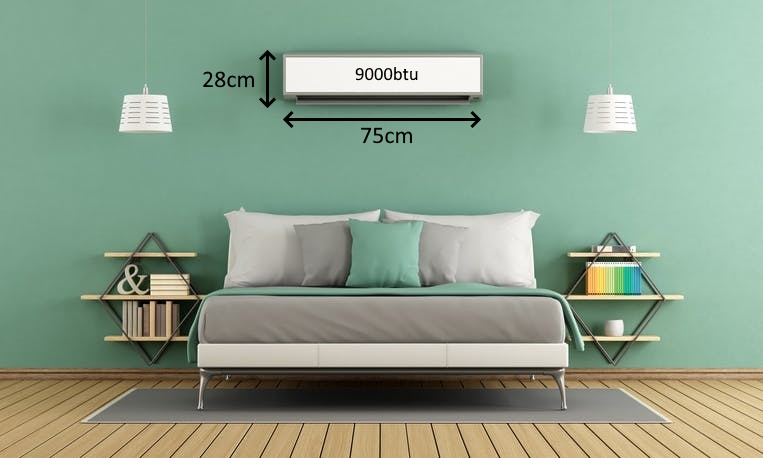Questions answered
Q: How do heat pumps work?
A: A condensor is installed outside and a fan unit on the wall inside. Refrigerant is circulated between the two units moving heat between them. Checkout this video for more information.
Q: How big are the indoor and outdoor units?
A: Our smallest system is the 9000 BTU. The internal wall mounted unit is H: 28cm W: 75cm D: 20 cm. Ideally this is mounted as high as possible with 15cm of space on all sides to allow air to circulate. The external unit is H: 53cm W:67cm D: 26cm. This can be wall or floor mounted but will need space around it to let air flow through the unit. More powerful systems are larger by up to 30%.
Q: What are the running costs for winter?
A: A helpful guideline to keep in mind is that heat pumps generally consume one-third of the power compared to traditional electric heating. The specific operating cost of a heat pump can fluctuate based on factors such as the level of insulation in your home and the external ambient temperature. These systems are equipped with a thermostat to regulate indoor temperature. During colder winter weather, reducing the desired temperature setting will result in lower power consumption.
Q: What are the running costs for summer?
A: The exact cost of running a heat pump will vary depending on how well your home is insulated and the outside ambient temperature. In a typical british summer air conditioning is normally only needed for 4-8 weeks when the weather is hottest. These systems have a thermostat that controls the indoor temperature. When cooling your home setting the desired temperature higher will reduce power consumption.
Q: What size unit will I need?
A: The size of the unit depends on the size of the room. Our most popular unit is 9000 btu this will normally be sufficient to heat and cool a room up to 200 sq/ft. There are some other factors to consider that we take into account when we perform a survey.
Q: Where can these units be installed?
A: The indoor unit needs to be wall mounted. The outdoor unit can be mounted on the wall or the floor. The two units are connected together via refrigerant lines so they normally will not be too far apart from one another (ideally 5-10 meters). The indoor unit needs to be connected to your home electrical supply. During our survey we will take pictures of the proposed instalation locations for both units and show a mock up of how they will look in the quotation details.

